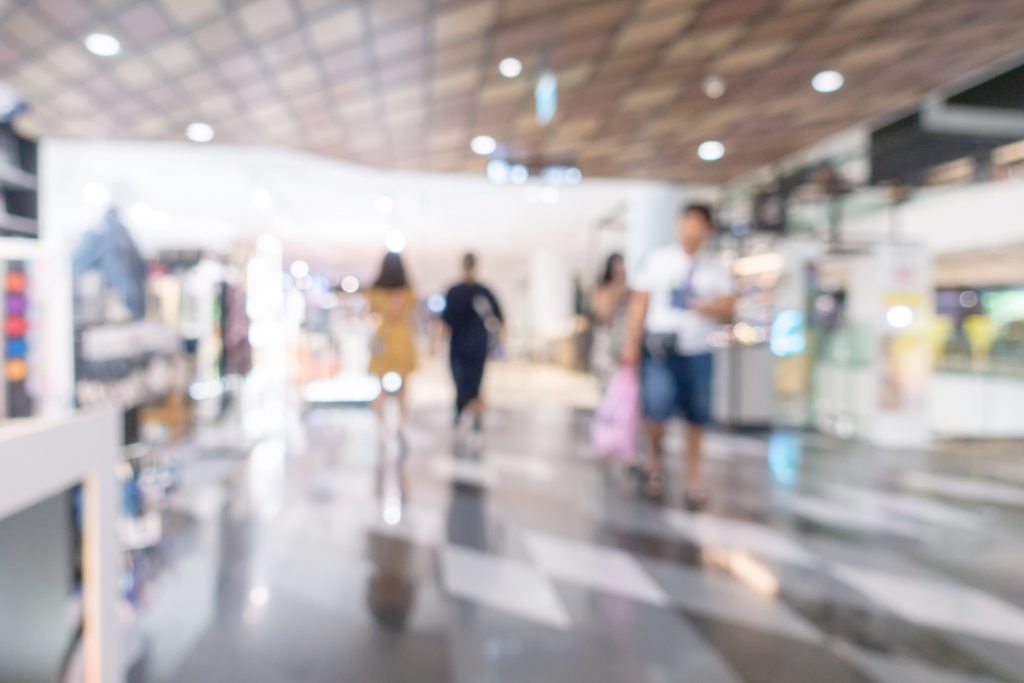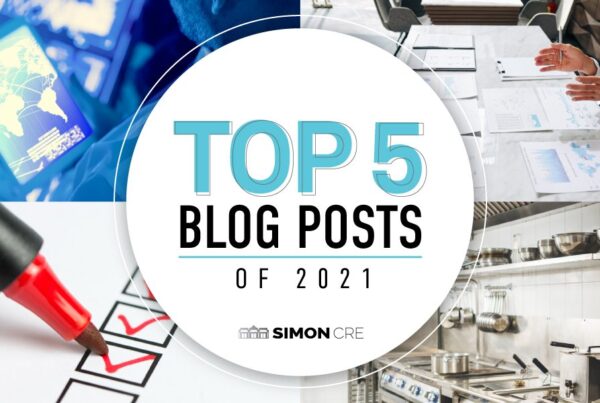This post originally appeared on SimonCRE Insights Blog and is republished with permission. Find out how to syndicate your content with theBrokerList.

Retail is transforming faster than ever thanks to a push for more digital enhancements and a demand for faster service. New social norms have changed the way we shop by creating the need for a combination of safety and convenience.
Let’s take a look at three trends that will change retail development.
Open Air Concepts
More retail developers are leaning towards open-air concepts because they provide a unique shopping experience. Open-air retail spaces allow people to enjoy the weather while they shop, rather than create an enclosed space away from the elements. People can feel more connected to nature like they would if they went out for a walk.
Open-air shopping centers don’t require a central AC system compared to traditional malls. This can help greatly reduce energy costs for the property. Each store would require its own AC unit, but the general space between shops would not require temperature control. This allows people to experience the feeling of being outside while shopping. More open space means developers can incorporate trees and other plants into development to provide shade and enhance the space with earthly elements. Lightweight coverings can also be installed for hot weather to block out harsh sunlight and rain.
Storefronts get increased visibility from farther away because they can place their signs higher to attract shoppers. Traditional shopping malls only make department stores visible from the outside, whereas outdoor shopping centers give every store the opportunity to be seen from farther distances because the shops are not enclosed under the same roof.
Outdoor shopping centers provide more access to stores. Traditional shopping malls only have a few entrances, whereas open-air retail centers provide more spaces to move in and out freely. This accommodates the demand for faster service and a seamless shopping experience. People get closer access to their desired stores. This concept ties into more evenly distributed parking. Not everyone has to crowd around the entrance when there are multiple access points to the stores shoppers care about the most.
Open-air retail spaces can double as places to hold events and entertainment. Day to night activities such as farmers’ markets, live entertainment, and workshops bring traffic to outdoor retail centers. Creating multi-purpose spaces brings added value to the center where the community can further connect. More businesses and organizations can populate these areas at different times when stores are not operating.
Changing Storefronts
Retail customers expect a more seamless shopping experience with faster service. Online shopping has increasingly gained popularity over the years and while consumers have continued to shop, how they choose to is changing the way stores operate. Ecommerce retail purchases are expected to rise from 14.1% to 22% in 2023. COVID-19 deterred many shoppers from making in-store purchases and increased the demand for in-store pickup and delivery. With so many online orders, stores are scaling down their retail spaces to accommodate less foot traffic.
Storefronts are doubling as distribution and pickup centers to give customers more options. Some stores like Target have created a way for shoppers to see what’s in stock at different locations and schedule an in-store pickup through their website and mobile app. Retail spaces are making room for same-day pickup orders. Designated pickup areas are located at the front of the store, creating a quick and easy experience for customers. They have the option to meet an employee at a front desk or have the employee deliver the items directly to their car. Pickup lockers are also popping up, further eliminating the need for space inside stores. Lockers make pickup faster and more convenient for customers to get their items as quickly as possible.
Self-checkout lanes have also contributed to smaller retail spaces. They don’t take up as much space as traditional checkouts and minimize the time it takes to wait in line to pay. Amazon introduced a self-checkout system involving computer vision and AI, Amazon Go, where customers scan a QR code from their phone to initiate their identity and payment information and are tracked by cameras as they shop. There’s no need for checkout areas because the cameras see what they take with them and charge them accordingly. This type of technology eliminates the need for checkout areas and promotes a more seamless shopping experience by cutting downtime spent in stores.
Transforming Parking Lots
Now that buying online and picking up in-store has become more frequent, retail spaces are having to make more room for designated pick-up parking. Stores are adapting to a higher volume of traffic and need to accommodate the fast pace of pick-up orders by creating temporary parking zones. Large retail centers like the Scottsdale Quarter in Arizona have created the retail to-go platform, where shoppers can place orders on their phones prior to pulling up in their vehicle, where they will be directed to designated zones and parking spots to pick up their merchandise. The Scottsdale Quarter has a total of seven designated pickup zones customers can quickly access.
Curbside pickup is creating more empty space in parking lots as fewer people feel the need to shop in person. Pickup services are speeding up the volume of customers that can visit a retail store on any given day, making it possible for shoppers who otherwise wouldn’t have had the time to go during their lunch breaks or in between errands. People can quickly get in and out of retail parking lots when they have less time to mill around stores.
Parking lots surrounding retail space are shrinking as a result. A trend that’s gaining momentum is smaller lots are converting into more opportunities to create revenue streams for other businesses. For example, Pop Up Republic is a company that works with retailers and parking lot owners to produce pop-up retail where there are large parking spaces like at shopping malls. Online stores have the opportunity to make an impression in-person and department stores get to utilize their lots to produce more income and pop-up-related foot traffic.
Retail development is beginning to diversify shopping experiences to meet the need for contactless and convenience demands. Not all customers are shopping in person every time they shop, which is why future retail development is focused on implementing ways for everyone to enjoy their experience.



